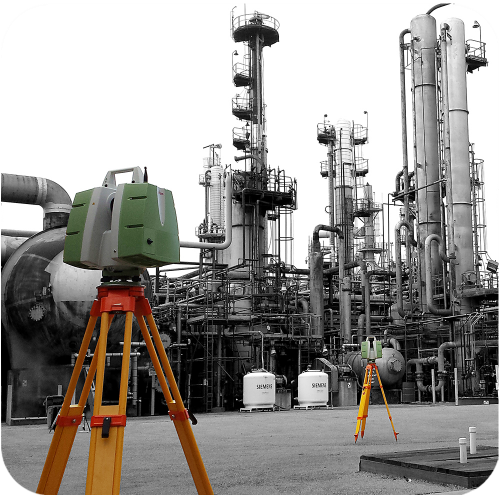The Blueprint of Tomorrow: Laser Scanning’s Role in Construction

In the dynamic realm of construction, where precision and efficiency are paramount, technological advancements continue to drive innovation and reshape traditional practices. Among these advancements, laser scanning stands out as a transformative tool that is revolutionizing how construction projects are planned, executed, and managed. By harnessing the power of lasers to capture precise three-dimensional data of existing structures and environments, laser scanning provides construction professionals with invaluable insights and capabilities that were once unimaginable. In this article, we’ll explore how laser scanning in construction and revolutionizing the way we see and build.
Understanding Laser Scanning in Construction:
Laser scanning, also known as LiDAR (Light Detection and Ranging), is a non-contact method of capturing the shape, size, and details of objects or environments using laser beams. In the context of construction, laser scanning involves the use of specialized scanning devices to capture accurate measurements and detailed imagery of construction sites, buildings, and infrastructure. These scanners emit laser pulses towards surfaces and objects, measuring the time it takes for the light to return and calculating distances based on the speed of light. The resulting data, in the form of a point cloud, provides a comprehensive three-dimensional representation of the scanned area, allowing construction professionals to visualize and analyze existing conditions with unparalleled accuracy.
Enhancing Design and Planning:
One of the primary applications of laser scanning in construction is in enhancing the design and planning process. Traditionally, architects and engineers relied on manual measurements and surveys to gather information about existing structures and environments, a time-consuming and error-prone endeavor. Laser scanning streamlines this process by rapidly capturing as-built conditions with incredible precision. By generating detailed point clouds of construction sites and existing structures, laser scanning provides designers and planners with a comprehensive understanding of the project site, allowing them to make informed decisions and identify potential challenges or constraints early in the design phase. This proactive approach not only improves the accuracy and efficiency of design processes but also minimizes the risk of costly errors and delays during construction.
Facilitating Construction and Prefabrication:
In addition to enhancing design and planning, laser scanning plays a crucial role in facilitating construction and prefabrication activities. By providing accurate measurements and as-built documentation, laser scanning ensures that prefabricated components fit seamlessly into existing structures, reducing waste and minimizing installation time. On the construction site, builders can use laser scanning to verify the accuracy of their work in real-time, detecting deviations from the design and addressing them before they escalate. This level of precision not only improves the quality of construction but also enhances safety and efficiency on the job site, ultimately reducing costs and accelerating project timelines.
Optimizing Asset Management and Maintenance:
Beyond the construction phase, laser scanning offers significant benefits for asset management and maintenance throughout the lifecycle of a building or infrastructure project. By creating precise digital twins of buildings and infrastructure, facility managers can streamline maintenance workflows, identify potential issues before they escalate, and optimize space utilization. With access to detailed as-built documentation, maintenance teams can accurately locate assets, plan maintenance activities, and track changes over time. This proactive approach to asset management improves operational efficiency, extends asset lifespan, and reduces lifecycle costs, ensuring that buildings remain functional and valuable for years to come.
Overcoming Challenges and Considerations:
While laser scanning offers significant advantages, it is not without its challenges and considerations. One of the main challenges is data processing and management. The large volume of data generated by laser scanning requires specialized software and hardware for processing, storage, and analysis. Additionally, factors such as scanner accuracy, resolution, and environmental conditions can impact the quality of scan data and must be carefully considered during scanning operations. Furthermore, while laser scanning provides detailed geometric information, additional data sources may be needed to capture color, texture, and other visual attributes of scanned objects or environments.
Conclusion:
In conclusion, laser scanning is revolutionizing the construction industry by providing construction professionals with unprecedented levels of accuracy, efficiency, and insight. From enhancing design and planning to facilitating construction and prefabrication activities, laser scanning is reshaping every stage of the construction process. By creating precise digital representations of existing structures and environments, laser scanning enables designers, planners, builders, and facility managers to make informed decisions, minimize risks, and optimize performance throughout the lifecycle of a project. As technology continues to advance, the potential of laser scanning to unlock new possibilities and reshape the future of construction is truly limitless.

